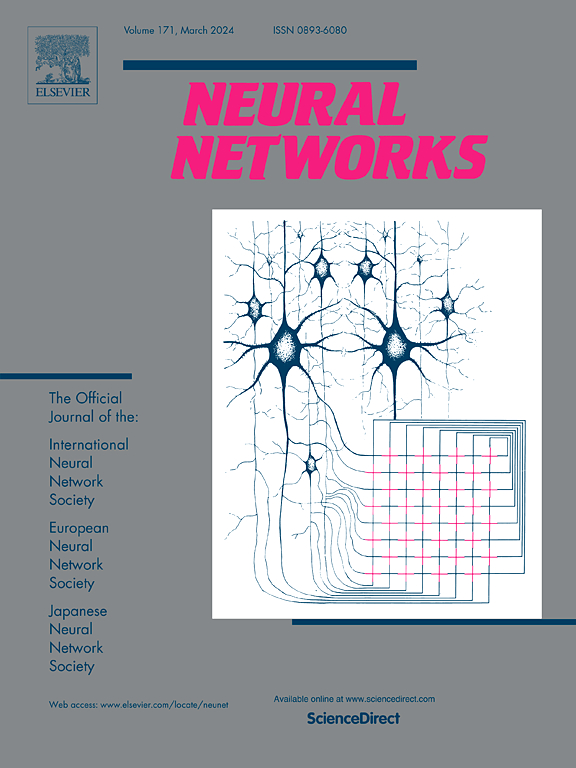利用 bpMRI 对前列腺癌的解剖结构和病灶进行级联分割时,采用边界 DoU 损失进行自适应窗口调整
IF 6
1区 计算机科学
Q1 COMPUTER SCIENCE, ARTIFICIAL INTELLIGENCE
引用次数: 0
摘要
利用双参数磁共振成像(bpMRI)对前列腺解剖结构和病变进行准确分割,对于借助人工智能诊断和治疗前列腺癌至关重要。在前列腺双参数磁共振成像(bpMRI)中,不同的组织和病变在每个序列的特定和狭窄范围内可视化效果最佳,这对图像窗口设置有不同的要求。目前,窗口设置的调整主要依靠经验,缺乏通用自动调整的有效方法。因此,我们提出了一种自适应窗口调整(AWA)模块,能够调整窗口设置以适应不同的图像模式、样本数据和下游任务。此外,鉴于损失函数在优化模型性能方面的关键作用,我们研究了不同损失函数在分割前列腺解剖结构和病变时的性能。我们的研究验证了边界差分损失函数(Boundary Difference over Union,DoU)在这些任务中的优越性,并将其应用扩展到三维医学成像中。最后,我们提出了一种针对前列腺解剖结构和病变的级联分割方法。这种方法利用解剖结构信息来提高病变分割的准确性。在 Prostate158、ProstateX 和 PI-CAI 数据集上的实验结果证实了所提方法的有效性。我们的方法代码见 https://github.com/WenHao-L/AWA_BoundaryDoULoss。本文章由计算机程序翻译,如有差异,请以英文原文为准。
Adaptive window adjustment with boundary DoU loss for cascade segmentation of anatomy and lesions in prostate cancer using bpMRI
Accurate segmentation of prostate anatomy and lesions using biparametric magnetic resonance imaging (bpMRI) is crucial for the diagnosis and treatment of prostate cancer with the aid of artificial intelligence. In prostate bpMRI, different tissues and pathologies are best visualized within specific and narrow ranges for each sequence, which have varying requirements for image window settings. Currently, adjustments to window settings rely on experience, lacking an efficient method for universal automated adjustment. Hence, we propose an Adaptive Window Adjustment (AWA) module capable of adjusting window settings to accommodate different image modalities, sample data, and downstream tasks. Moreover, given the pivotal role that loss functions play in optimizing model performance, we investigate the performance of different loss functions in segmenting prostate anatomy and lesions. Our study validates the superiority of the Boundary Difference over Union (DoU) Loss in these tasks and extends its applicability to 3D medical imaging. Finally, we propose a cascaded segmentation approach tailored for prostate anatomy and lesions. This approach leverages anatomical structure information to enhance lesion segmentation accuracy. Experimental results on the Prostate158, ProstateX, and PI-CAI datasets confirm the effectiveness of the proposed methods. Our code of methods is available at https://github.com/WenHao-L/AWA_BoundaryDoULoss.
求助全文
通过发布文献求助,成功后即可免费获取论文全文。
去求助
来源期刊

Neural Networks
工程技术-计算机:人工智能
CiteScore
13.90
自引率
7.70%
发文量
425
审稿时长
67 days
期刊介绍:
Neural Networks is a platform that aims to foster an international community of scholars and practitioners interested in neural networks, deep learning, and other approaches to artificial intelligence and machine learning. Our journal invites submissions covering various aspects of neural networks research, from computational neuroscience and cognitive modeling to mathematical analyses and engineering applications. By providing a forum for interdisciplinary discussions between biology and technology, we aim to encourage the development of biologically-inspired artificial intelligence.
 求助内容:
求助内容: 应助结果提醒方式:
应助结果提醒方式:


